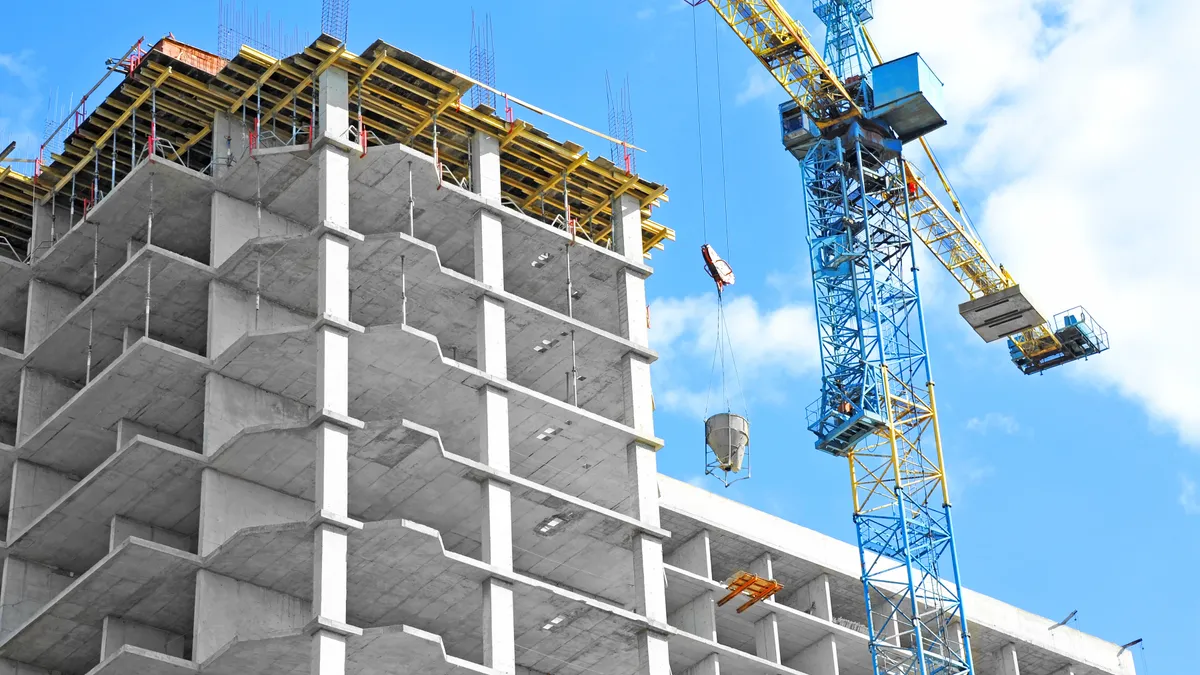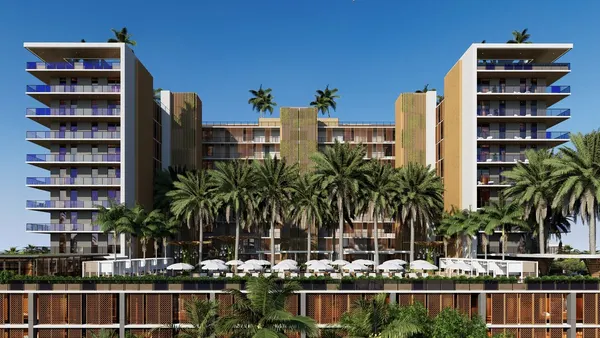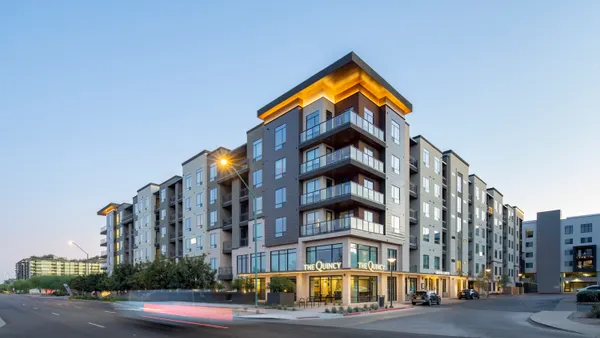Dive Brief:
- Starts for buildings with five or more units fell 30.4% month over month in May and rose 5% year over year to a seasonally adjusted rate of 316,000, according to a monthly report from HUD and the U.S. Census Bureau.
- At the end of May, 733,000 units were under construction, an 18.9% YOY drop and a 1.5% month-over-month decline. Multifamily developers finished an annualized 487,000 apartments in buildings with five or more units, a 6.7% YOY decline and a 0.2% month-over-month increase.
- Overall housing starts came in at a seasonally adjusted annual rate of 1.3 million in May — a 4.6% decrease YOY and a 9.8% drop versus April. Single-family home starts were at a rate of 924,000 homes, a 7.3% YOY decline and a 0.4% month-over-month increase.
Dive Insight:
Apartment developers pulled permits for a seasonally adjusted rate of 444,000 apartments in buildings with five units or more, a 13% YOY increase and a 1.4% increase compared to April.
The debt market isn’t a significant hurdle as large developers plan new projects, according to Greg Bonifield, founding partner at Charleston, South Carolina-based apartment developer Woodfield Development.
“The debt markets are still very liquid,” Bonifield told Multifamily Dive. “A multitude of debt lenders are anxious to deploy capital in the multifamily sector, and at what I consider to be attractive spreads.”
Bonifield said that traditional banks, life companies and other institutional players are active and liquid in the space.
“You have seen numerous funds put together that are actively deploying debt, especially in the bridge loan area,” Bonifield said. “Those are people wanting to put out money in the two- to five-year time frame for people that want to hold the assets before selling them or putting longer-term debt on.”
However, equity continues to be an issue. “On the equity side, it's very selective there,” Bonifield said. “There absolutely is [limited partner] common equity available for new multifamily development.”
But that equity is interested in well-located projects with strong sponsors. “It is generally more available for very established development groups, but it's limited and strategic, and it's both domestic and foreign,” Bonifield said.
Click here to sign up to receive multifamily and apartment news like this article in your inbox every weekday.













